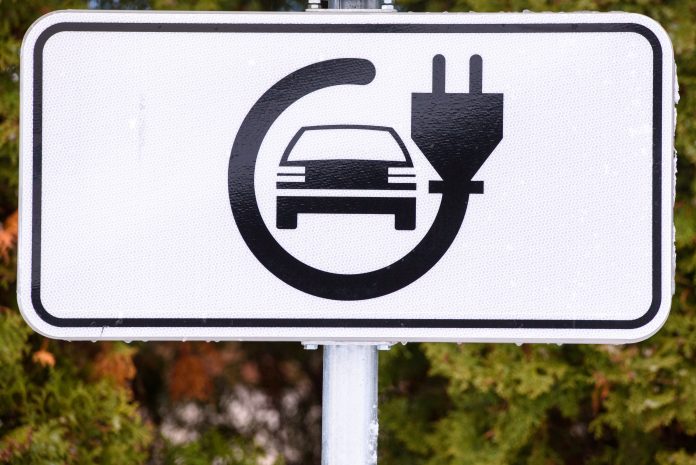Carl Clarke, head of EV business development at Enerveo, discusses EV infrastructure and the need for its whole-town adoption for meeting net-zero targets
Across the United Kingdom, there are many sustainable solutions being implemented to support making net zero a reality, from solar power and battery storage to wind power and electric vehicles (EV). In addition to these, targets such as net zero by 2050 and a ban on sales of petrol and diesel cars by 2030 are encouraging local authorities to prioritise meeting net zero.
When assessing each solution’s performance on an individual level, it is clear that EVs are leading the way to net zero within the transport industry – due to the advanced nature of its technology.
EVs are still primed to unlock significant environmental benefits this year and beyond, with cleaner air in our towns and cities a much-anticipated priority for many local authorities. However, there are currently obstacles in place which are limiting the speed of deployment needed to start realising these full benefits. Specifically, the power supply from the national grid is being put under immense strain to meet the needs of EVs.
To remove the current obstacles and support a smoother deployment of widespread EV use in the UK, a whole-town approach is crucial. This would allow the maximum utilisation of systems already in place and newer industry innovations, but importantly it would also help continue encouraging a shift in the consumer mindset. These changes are key to accelerating the rollout of EVs and achieving net zero.
A whole-town approach to the deployment of EV infrastructure
Funding, local infrastructure and the demographics of a town all have an impact on the speed of EV deployment. With complex and individual situations to navigate, stakeholders, including local authorities, Distribution Network Operators, and funders, must collaborate to deliver the most effective solution and facilitate an impactful EV introduction in any location.
Even though assessing the commercial viability of a potential new site will typically be the top priority, the approach must involve considerations such as what is the current infrastructure in place, how much work is needed to add EV charge points, and whether it could support EV charge points with the power they require. This is vital to support the most effective project rollout. With this in mind, we need to shift our thought process to a new approach which explores “how do we make this an EV town?” as opposed to “how many EV carparks do we need?”.
A blended approach, utilising different solutions to source power for EV charge points, is necessary to overcome a stressed infrastructure. Ultimately, some areas will need more stable, stronger supplies of energy, for example, on motorways. But in other areas with different requirements, a bolt-on to existing infrastructure could be the answer. Assessment and adaptability are key.
Rethinking power supply and minimising waste
One of the biggest challenges faced when assessing the EV implantation plan for an area is the power supply. In 2022, the UK government set a target for a tenfold expansion of EV chargers by 2030. Though the outcome will be necessary to keep on track with net zero plans, the quantity-driven nature of the target will lead to increased strain on the national grid.
Innovation is the key to hitting the target without comprising the power supply.
One approach currently being explored is redirecting surplus energy from other infrastructure, for example, attaching EV charge points to lighting columns. With this method, charging is relatively slow compared to alternatives, such as direct current (DC) power supplies.
It offers a strong opportunity to increase deployment volume in urban areas. This is particularly useful for people who don’t have on-street parking and can leave their car charging overnight while also minimising energy waste. Furthermore, it offers a more cost-effective solution since the bulk of the infrastructure is already in place.
Protecting the power supply with microgrids
Microgrids are also becoming a popular option. They reduce reliance on the national grid by offering energy generation and storage with the scope to power anything from a building to a community. So far, the technology has proved invaluable for hospitals in a natural disaster. However, we are now learning that this technology could play a key role in powering EV networks. Moreover, since they have their own dedicated supply of energy, there is a great opportunity to utilise renewable resources, such as solar power – alleviating reliance on the grid and minimising greenhouse gases (GHGs) and other pollutants.
There are plenty of solutions when it comes to planning the power supply, but it remains important for project managers to not only think about how we power EV chargers but also how they power cars. Dynamic loan management could prove to be an effective solution to this. It would distribute energy in line with a car’s requirements, therefore if multiple cars arrive at a charge point, only the amount of energy needed is given to each car, minimising power supply wastage.
EV infrastructure is the future for meeting Net Zero
To realise the benefits of EV infrastructure and minimise pressure on the energy source, we must adopt a whole-town approach where individuals in the community are engaged in the journey too. This is crucial to ensuring that the infrastructure is used in the most effective way following rollout.
At this stage of EV understanding and experience, a sticking point for customers has often been range anxiety, with concerns of getting stranded with no charging points nearby and a lack of charging points, for example, in supermarkets. In order to address this and boost consumer confidence, we need to shift to a mindset where customers make frequent, shorter charging sessions rather than feeling that a charging session must always be completed to 100%.
This mindset is particularly valid when you consider that approximately three-quarters (72%) of journeys in the UK are under five miles, according to the government’s National Travel Survey 2021. So, a full charge is not necessary to meet most consumers’ daily demands. But we do have to build drivers’ confidence that their car and the infrastructure in place will get them from A to B.
For longer distances, education is required to ensure drivers know they can use the supporting technology available to plan their journeys with convenient breaks for charging. We have already seen great strides made in this field and there are apps that can provide users with real-time information on the availability of chargers.
Accelerating EV infrastructure deployment
There have been fantastic developments to celebrate within the industry throughout the previous few years in particular; however, we still have progress to make.
We know what is needed to accelerate the volume of EV infrastructure deployment and support net zero goals, but we must now adopt a whole-town approach, collaborating with stakeholders and consumers alike, to achieve the crucial next steps.
For more information, visit www.enerveo.com.











